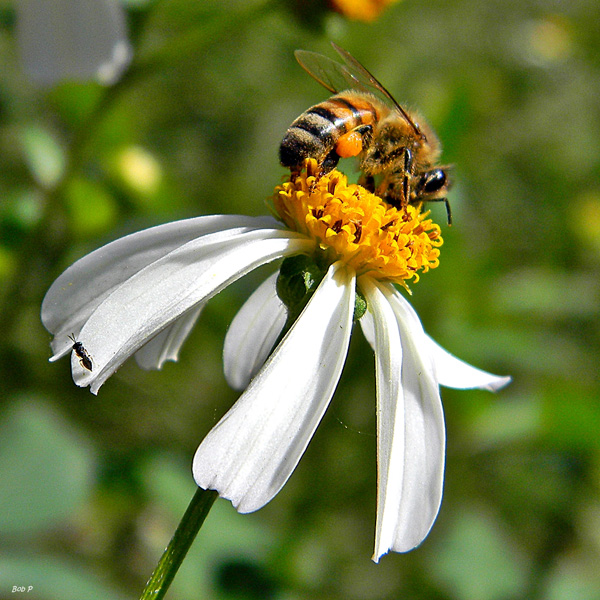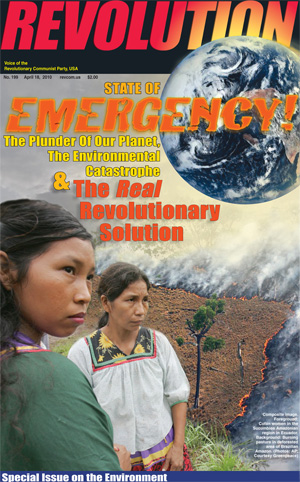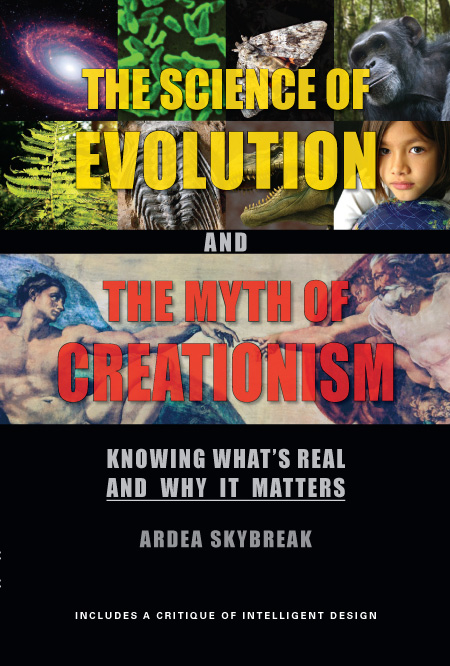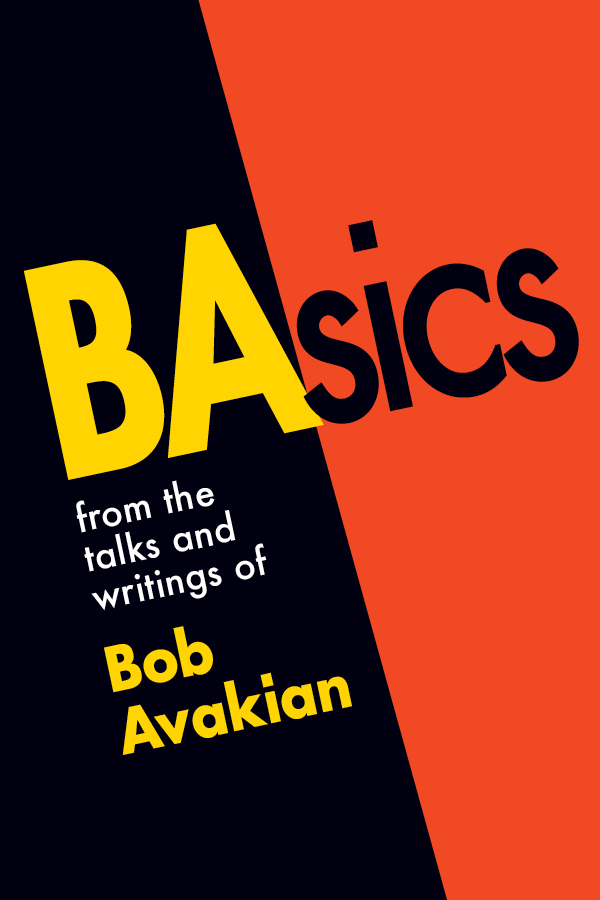Why the Bees Are Disappearing—and What It Means for the Planet and Humanity
by Orpheus Reed | March 28, 2016 | Revolution Newspaper | revcom.us

A Western honey bee forages on a Spanish needle. The orange mass on the bee's hind leg is her pollen basket. Photo: Bob Peterson from North Palm Beach, Florida, Planet Earth!
https://commons.wikimedia.org/w/index.php?curid=38199011
Over the past decade, bees have been disappearing and dying worldwide in disturbing numbers. In the first years of this, beekeepers would often find whole colonies of their adult honey bees just gone, never to return. Often only a few bees would be left in the hive, taking care of the queen and the immature bees. This disappearance of bees from large numbers of hives came known as colony collapse disorder (CCD). In recent years, it has become more common to find huge numbers of dead bees around the hives—or colonies dwindling away to nothing with remaining bees weakened and unable to flourish.
The collapse, dying off, and weakening of honey bee colonies has become an ongoing worldwide phenomenon. It was not uncommon in “normal” years for fairly large numbers of bee hives to be lost due to various factors. But now, bee hives are being lost at about twice the normal rate.
It’s estimated that 10 million bee hives were lost worldwide from 2007 to 2013. Beekeepers in the U.S. and Europe report close to a third of their hives have been lost each year for much of the last decade. Last year, about 42 percent of bee colonies were lost in the U.S. Some beekeepers have had almost all of their hives destroyed.
This is a very big deal, a serious threat to humanity and the natural world. But the ruling classes of the world are not responding to this crisis as the huge threat it is. More essentially, they are unable to respond in this way because of the way agriculture is carried out under the capitalist mode of production and how that requires them to interact with the natural world. This point will be returned to later in the article.
Why Humans and Nature Depend on Pollinators

State of Emergency!
The Plunder of Our Planet,
the Environmental
Catastrophe, and the
Real Revolutionary Solution
Right-click here to download pamphlet (PDF)
Foraging bees collect pollen and nectar from flowering plants to feed themselves and their colonies. In doing this, bees often spread pollen from the male parts of a flower to the female parts of a flower of the same species. This fertilizes the plant ovaries, resulting in the production of seeds and fruit.
Pollination by bees—domesticated honey bees as well as wild bees, of which there are 20,000 species worldwide—is responsible for providing an estimated one out of every three bites of food humans put into their mouths. According to the Food and Agriculture Organization of the United Nations (UN), more than three-quarters of the world’s food crops rely at least in part on pollination by animals. Most fruit crops; many diverse vegetables like tomatoes, cauliflower, squash; many bean varieties; nuts like almonds; hay and alfalfa; and many more plants vital for human life require pollination.
And it’s not just bees that have been dying off. Wild and domesticated bees are the main pollinators, but there are many other wild pollinators—butterflies, moths, beetles, flies, different types of birds, and even bats. According to a UN diversity panel, 40 percent of invertebrate pollinator species (“invertebrates” are animals without a backbone, including bees, butterflies, and other insects) face extinction worldwide. Sixteen percent of vertebrate pollinators (“vertebrates” are animals with a backbone, including various birds and bats) are facing global extinction. One invertebrate pollinator is the beautiful and iconic monarch butterfly. Each year these amazing creatures migrate as far as 2,800 miles from Canada to Mexico in the fall. In 1990 there were an estimated 1 billion monarch butterflies—only 30 million remain now, 3 percent of the earlier population.
The killing off of bees and other pollinators threatens the future of the world food supply with potentially huge consequences for large sections of humanity worldwide.
And beyond this, it’s a threat to world ecosystems in general. Nearly 90 percent of wild flowering plants depend to some extent on pollination by animals. These plants are increasingly at risk from the decline of pollinators. This can have enormous disruptive consequences for all the plants and animals that may interact with or depend on these flowering plants. So the decline of pollinators could have a cascading impact on entire ecosystems.
What’s Killing the Bees and Pollinators?

Order at Insight Press
In digging into the potential causes of what is happening to bees and other pollinators, what comes into view is that there are a number of different factors involved, different ways that pollinators are being impacted.
Bee health is dependent on a variety of accessible flowering plants at least for large parts of the year, and much natural habitat that bees rely on has been destroyed.
Bees face a swarm of pathogens, biological agents that can cause harm to or kill an organism. For instance, the Varroa destroyer mite literally sucks bee lymph (the equivalent of blood in humans) and helps spread viruses that can be deadly to bees. Bees are susceptible to infection by the Nosema fungus, which can kill them. In many cases, the chemicals that big companies like Bayer, Dow and Monsanto market to kill off these pathogens can also weaken or even kill the bees they’re supposed to protect. These chemicals are themselves toxic and can weaken bees’ natural genetic defenses to fight off pathogens, making the “cure” as bad or worse than the original pathogen.
Another factor is climate change, which is being driven by the relentless spewing of greenhouse gases under the workings of global capitalism-imperialism. Climate change is harming pollinator species and the plants that rely on them because the timing when plants flower and the ranges where flowering plants and the animals tend to live are being transformed, disrupting their interaction.
And there is increasingly strong evidence that pesticides, especially a relatively new class of pesticides called neonicotinoids (or “neonics”), can have huge adverse impacts on bees and bee colonies, and this could be a key factor in the disappearance and dying of bees (see companion piece, “The Severe Danger of ‘Neonic’ Pesticides to Bees”).
All of these factors (and others) can affect each other and work together, acting to increase the negative impact compared to just one factor alone.
A System That Is Destroying the Environment

Environmentalists and others who care about what is happening to nature often argue that the problem is big monopolies and greedy interests that have too much influence in the political structures. And that in agriculture, the problem is control by big corporations that put profits before people or the environment. Yes, there is greed and big monopolies—but to really find the answers and solutions, to get at the real problem and solution, we have to understand why it is that the very laws of capitalism, the “rules of the game” of this system, require it to operate in a way that is destructive of people and the environment. And that no amount of reforms, regulations, or changes in who runs this system will stop this. Why is this so?
Let’s look briefly at the ways capitalism operates that is destructive to bees and pollinators and nature in general, with a focus on agriculture, and why this is driven by the rules of capitalism and the nature of this mode of production—the ways capitalism is required to operate economically.
First, under capitalism, food is not and cannot be approached as a human need but only another “good” to be bought and sold—a commodity like all other goods and services, including human labor power. In the world today, food production is dominated by a global system of capitalist industrial agriculture to produce this commodity. In the U.S., for example, small-scale farmers have mainly been squeezed out by larger agribusiness interests that were able to mobilize huge assets, mechanize crop production, and lower the costs of production. These large capitalist interests have gained domination over the whole chain of food production, from the ownership of seeds...to the means through which agriculture is carried out...to the marketing and distribution of the food itself.

Do you know anyone else—any person or organization—that has managed to bring forth an actual PLAN for a radically different society, in all its dimensions, and a CONSTITUTION to codify all this? — A different world IS possible — Check out and order online.
This is a globalized system of agriculture—where vast monopolies, agribusiness interests of whole countries, and capitalist states are battling it out on a world scale over who will achieve the widest scale production, who can dominate the market for food products, and who can force conditions beneficial to their private interests against other big capitalist competitors. There is a vicious battle to win out, driven by the anarchy inherent in capitalist production. Each capitalist or group of capitalists face the compulsion to keep expanding and increasing profits, or be driven under by their competitors.
Capitalist competition drives forward the development of vast monocultures (single-crop production), including the mowing down of forests and wild lands—not so people can be fed, but in order to produce the most, the most cheaply. In monocultures, the single crop flowers at the same time. Monoculture has contributed to the widespread loss of diverse wild plants and more diverse crops that flower at different times, which is beneficial to bees and other pollinators. In the U.S. and parts of Europe, honey bee colonies are shipped by trucks from one side of the continent to another to pollinate these monoculture crops, a practice that is likely a contributing factor to the stress on honey bee colonies. For instance, 60 percent of honey bee colonies in the U.S. are brought together in California each year to pollinate the almond crop—under such conditions, pathogens can spread more easily among colonies.
Because of the anarchy of capitalist production, it isn’t possible for agriculture to be carried out with a sustainable, rational approach to growing food for the long-term health of humans and continuation of the natural world. Instead, geared to profit making and quick successes to beat out competitors, monoculture crops and seeds are cranked out—and that destroys much-needed genetic diversity that is best adapted to the environmental conditions in particular regions. Crops are engineered to be resistant to pesticides and dependent on use of chemical fertilizers that are required to keep monoculture crops growing. Crops and seeds are soaked in toxic pesticides like neonics to kill or ward off “pests,” despite the fact that these pesticides do great harm and even can kill off the pollinators the crops need to produce as well as wild plants pollinators need. Herbicides kill other wild plants needed by pollinators. And these chemicals poison the soil, streams, lakes, air and animals—including people.
There is no conscious overall plan, or possibility of drawing up such a plan, under capitalism for developing agriculture in a way that takes into account the long-term viability and preservation of the soil, genetic diversity that is key to plant health, or the protection of ecosystems and people from toxic chemicals that are now present in basically everything and everybody.
All of these requirements of how capitalism must operate mean that crops will be grown for the fastest, most profitable output to gain competitive advantage for individual capitalists. And overall, production and science are chained to the needs of empire and capital accumulation, not to ensuring the future of humanity and the environment. The production and burning of oil and other fossil fuels roar forward, despite the tremendous danger to the planet’s climate and species.
Capitalism-imperialism and those who rule have NO solution—and they are incapable of coming up with a real answer—to the destruction of bees and other pollinators. In fact, the brutal workings and the ugly social and political relations of this system are causing immense damage to the environment overall around the world—and driving the world toward global ecological catastrophe, putting the future of humanity and the planet itself in urgent peril.
Volunteers Needed... for revcom.us and Revolution
If you like this article, subscribe, donate to and sustain Revolution newspaper.

 This system and those who rule over it are not capable of carrying out economic development to meet the needs of the people now, while balancing that with the needs of future generations and requirements of safeguarding the environment. They care nothing for the rich diversity of the earth and its species, for the treasures this contains, except when and where they can turn this into profit for themselves....These people are not fit to be the caretakers of the earth.
This system and those who rule over it are not capable of carrying out economic development to meet the needs of the people now, while balancing that with the needs of future generations and requirements of safeguarding the environment. They care nothing for the rich diversity of the earth and its species, for the treasures this contains, except when and where they can turn this into profit for themselves....These people are not fit to be the caretakers of the earth.



